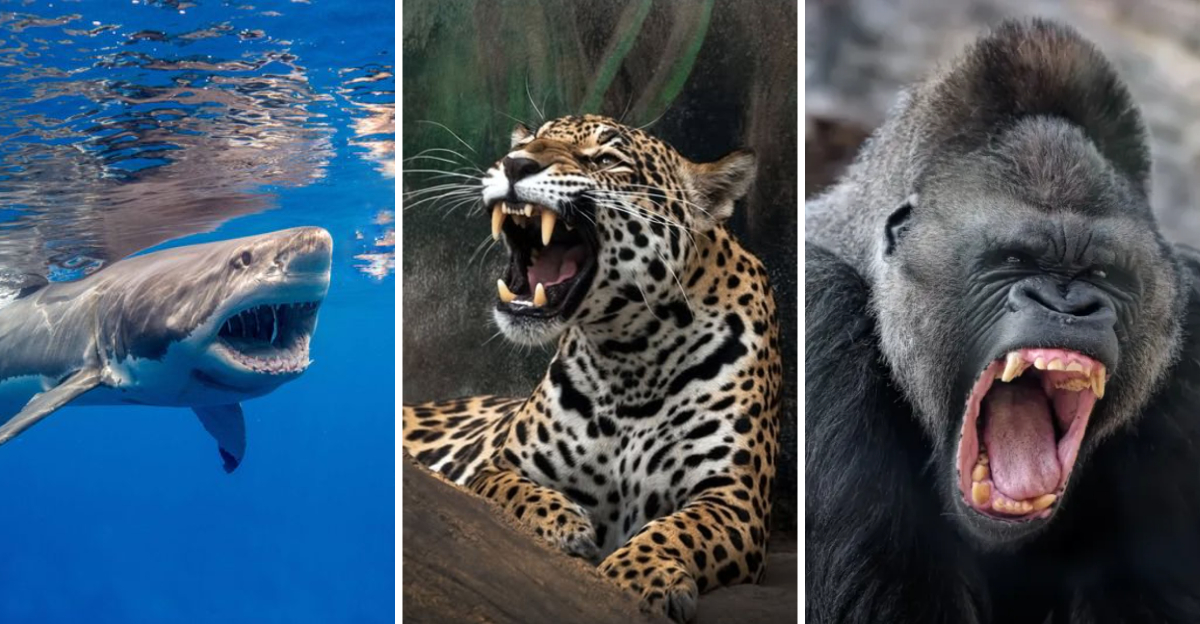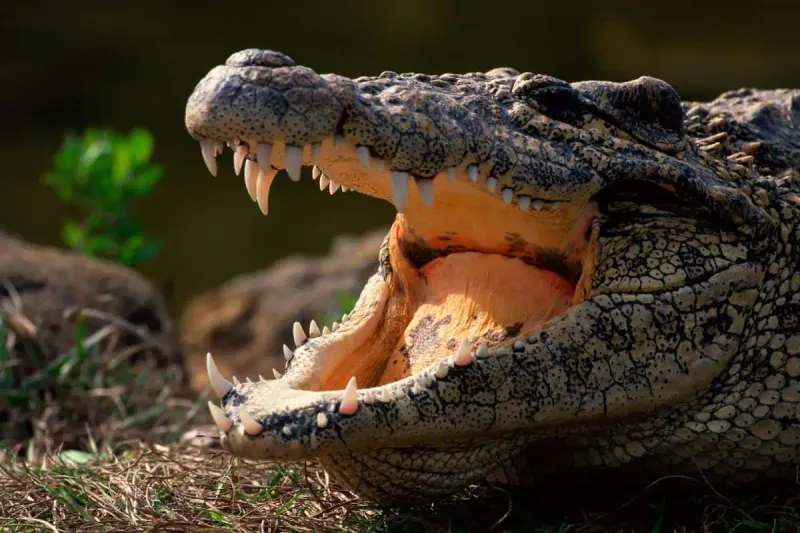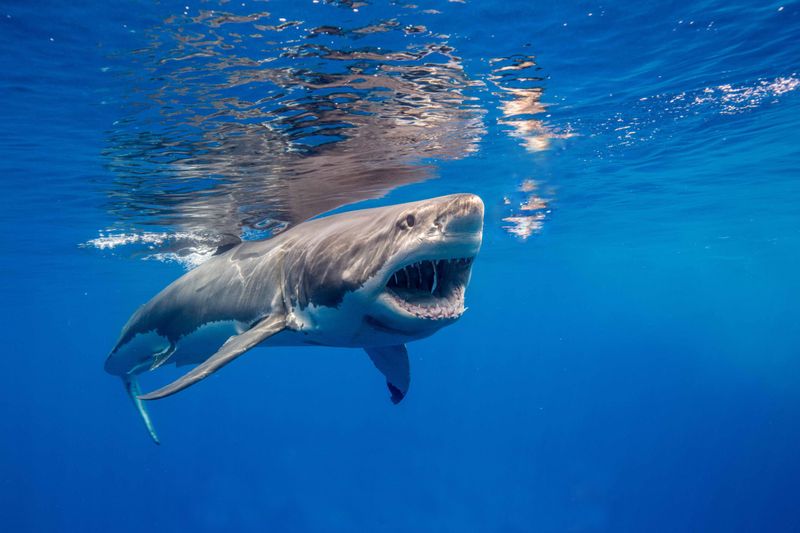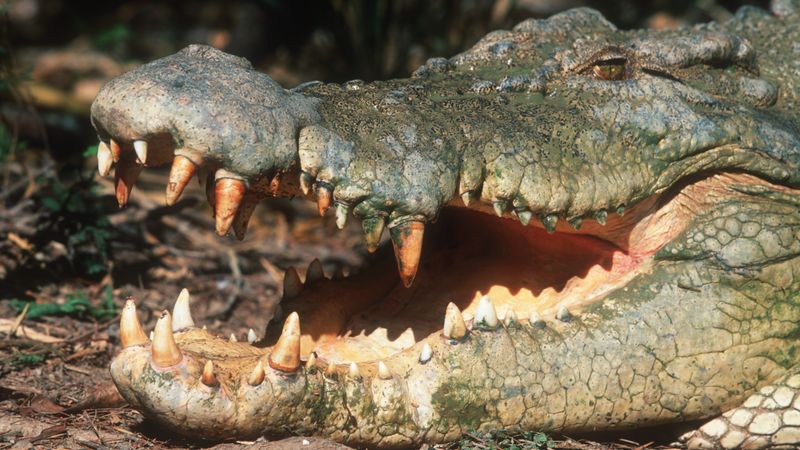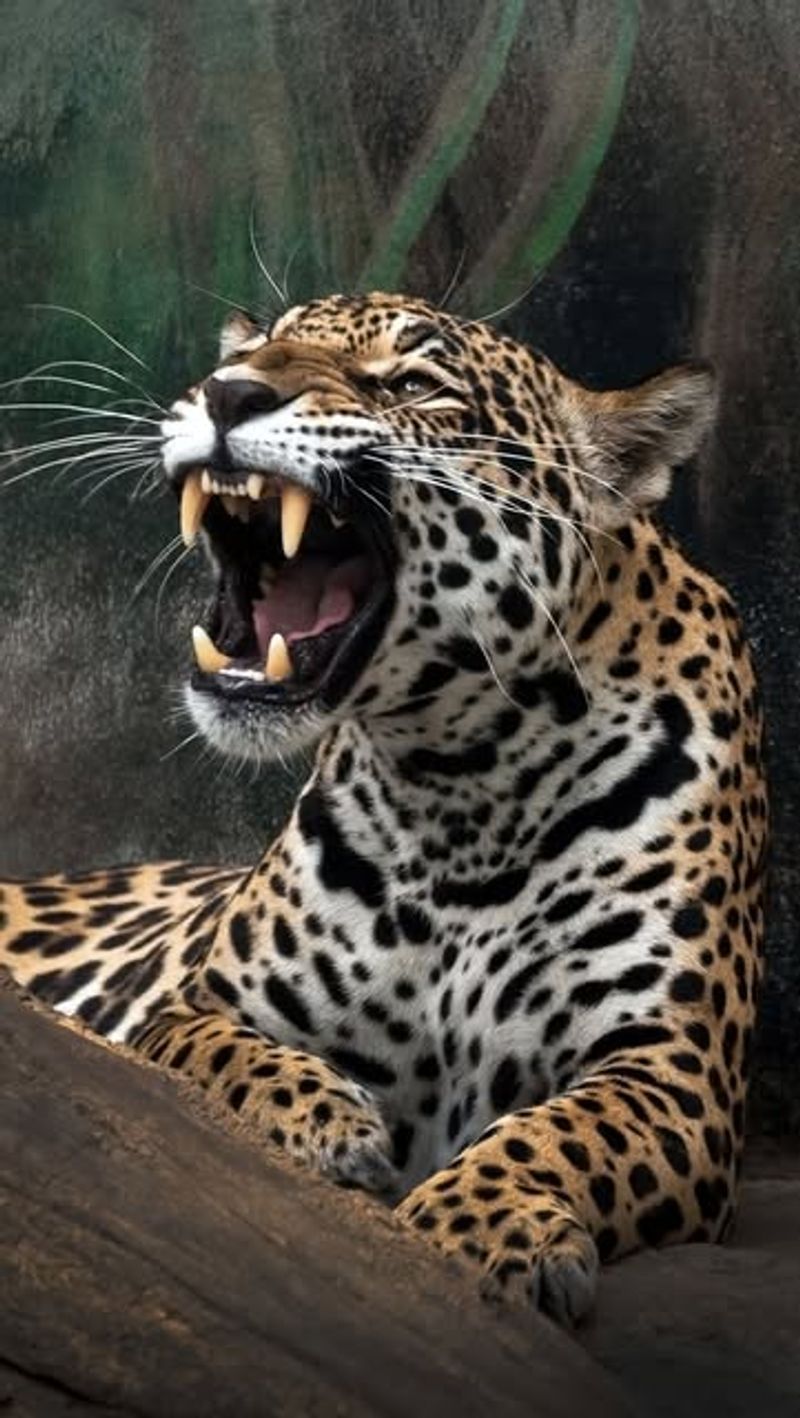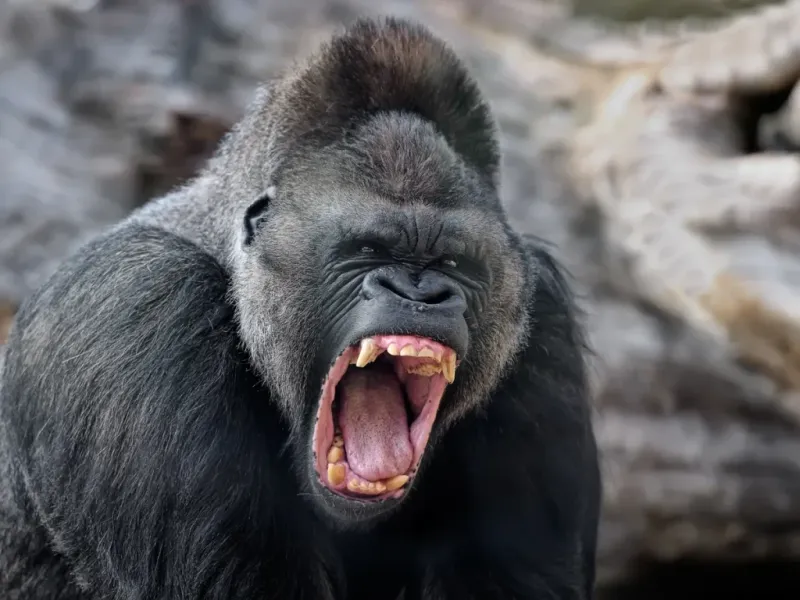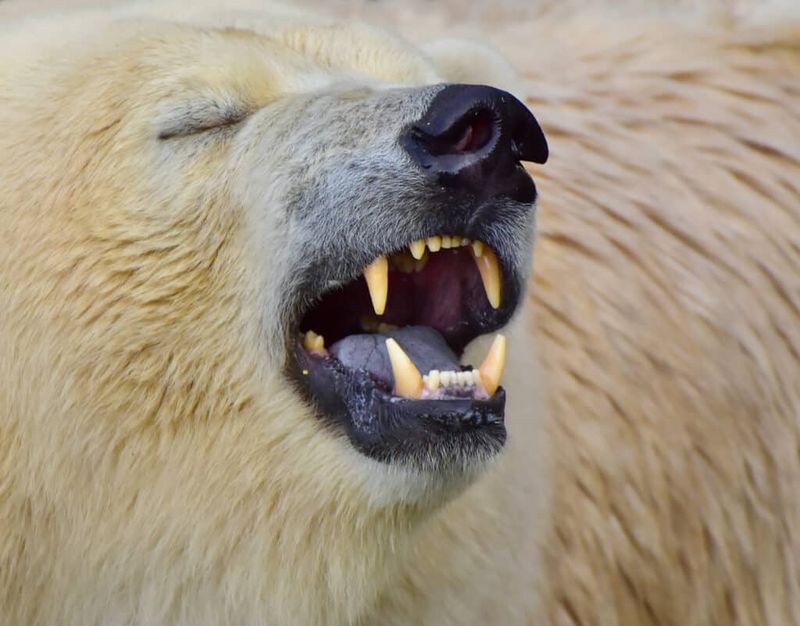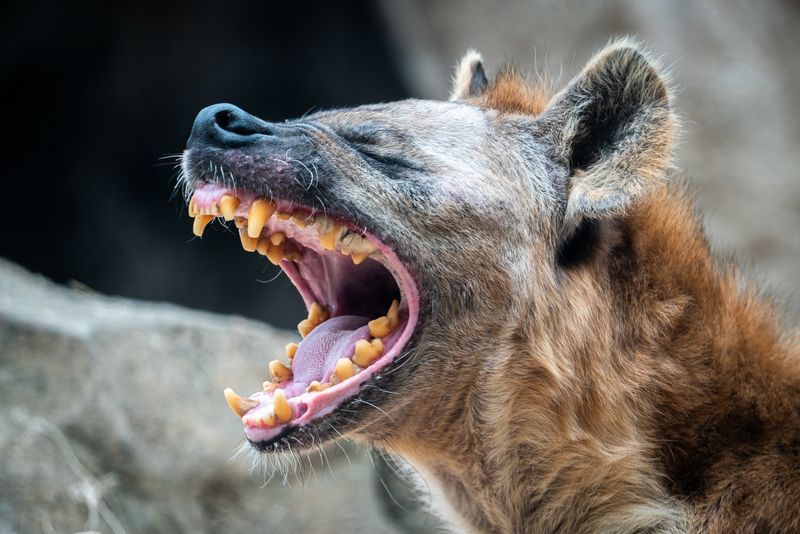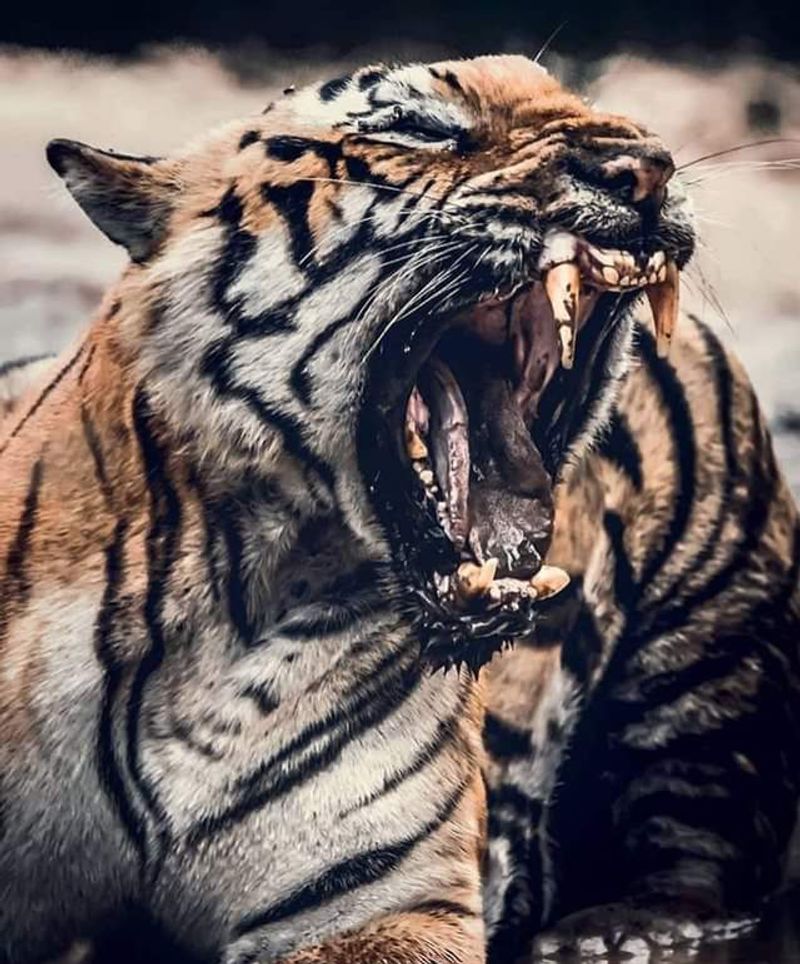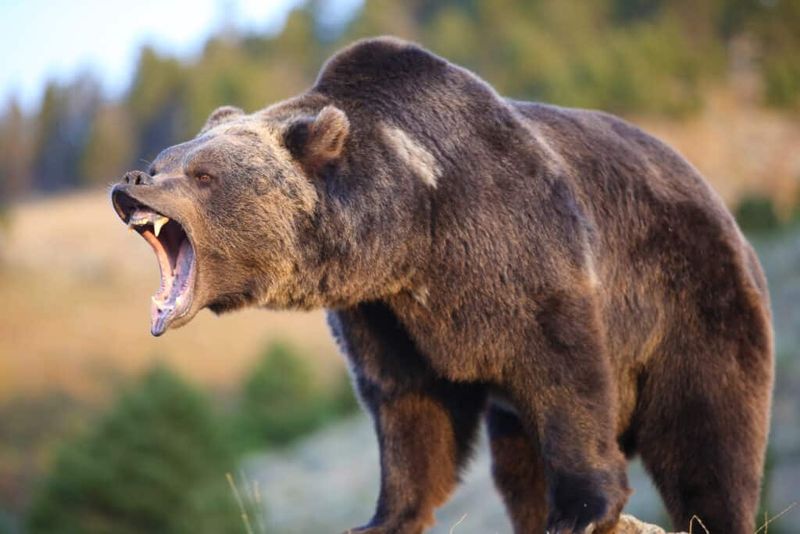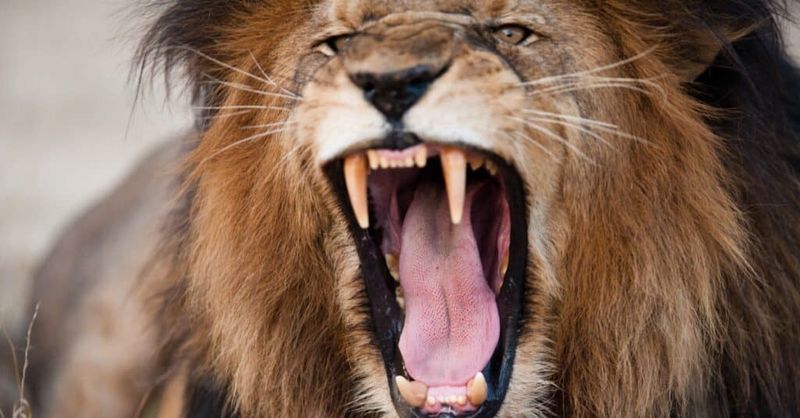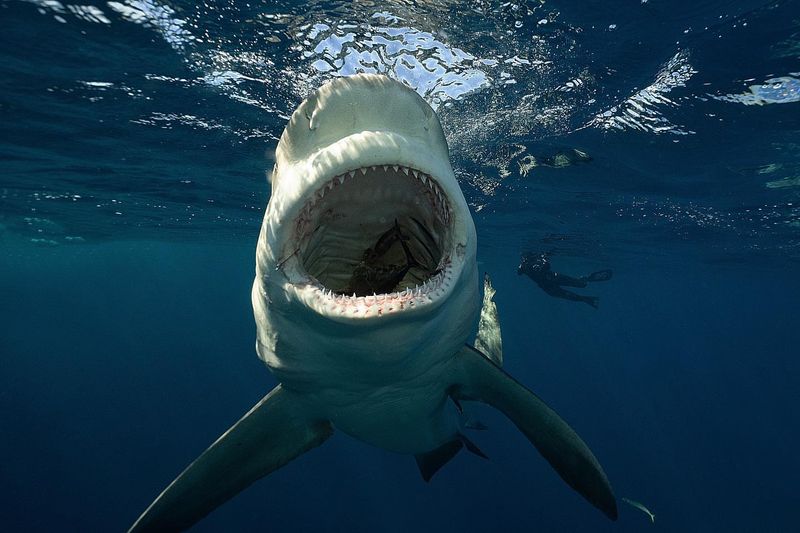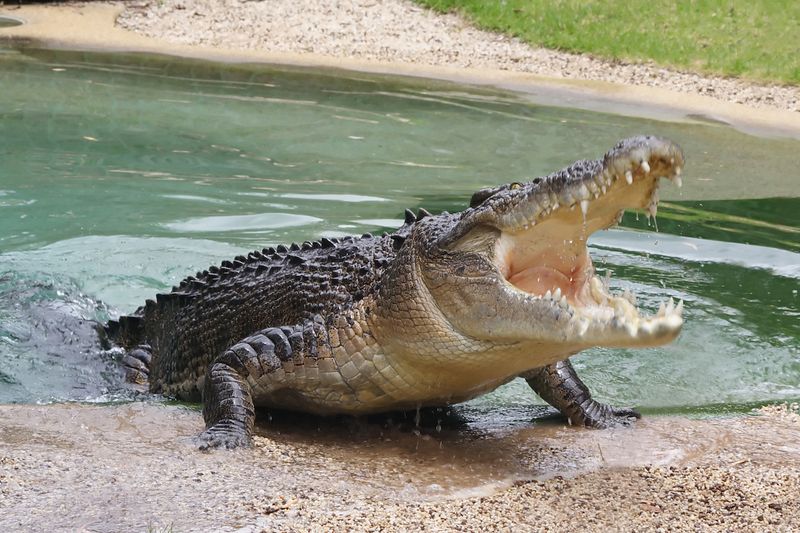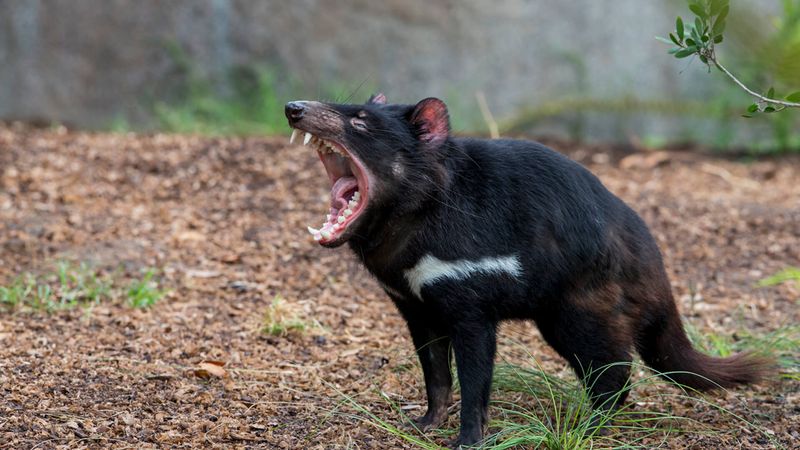📖 Table of Content:
The animal kingdom boasts a myriad of creatures with impressively strong jaws, a testament to their evolutionary mastery and unique survival strategies. From the depths of the oceans to the dense jungles, these animals utilize their formidable bite forces to hunt, defend, and thrive in their natural habitats. This list explores 14 remarkable animals, each with a jaw strength that leaves an indelible mark on the wild.
1. Nile Crocodile
Known for its unparalleled jaw strength, the Nile Crocodile reigns supreme with a bite force of approximately 5,000 PSI. These ancient reptiles are often found lurking in African rivers, waiting patiently for unsuspecting prey. Their jaws are designed to exert immense pressure, capable of crushing bone and even splitting small boats. With a reputation as a formidable predator, Nile Crocodiles are both feared and revered in the animal kingdom. Did you know? These crocodiles have been around for millions of years, surviving and adapting through major changes on earth.
2. Great White Shark
An iconic ocean predator, boasts an estimated bite force of 4,000 PSI. Their imposing jaw strength allows them to effortlessly rip through the flesh of seals and other marine animals. As they glide silently through the water, their jaws become an instrument of precision and power. Sharks have long fascinated and frightened humans alike. Despite their reputation, Great Whites rarely attack humans. Interestingly, their teeth are constantly replaced throughout their lives, ensuring they remain top hunters of the sea.
3. Saltwater Crocodile
The largest of all living reptiles, possess a formidable bite recorded at 3,700 PSI. These giants inhabit the brackish and freshwater regions of Southeast Asia and Australia. Their powerful jaws can crush turtle shells and bones with ease. As apex predators, they play a crucial role in their ecosystem. Fun fact: Saltwater Crocodiles can travel over long distances in the ocean, sometimes being spotted far from land. Their opportunistic nature and adaptability make them one of the most efficient predators alive today.
4. Hippopotamus
Often underestimated, the Hippopotamus has a bite force of around 1,800 PSI despite its herbivorous diet. These massive creatures, primarily found in sub-Saharan Africa, are highly territorial and fiercely protective. Their jaws can be dangerously powerful, capable of causing significant harm if provoked. Hippos spend most of their time in water, which helps them regulate their body temperature. Did you know? Despite their bulk, hippos can run up to 30 km/h on land, making them surprisingly nimble.
5. Jaguar
Among big cats, the Jaguar stands out with the strongest bite force of approximately 1,500 PSI. This power allows them to crack the skulls of prey and even penetrate turtle shells, a unique hunting adaptation. Inhabiting the dense forests of the Americas, Jaguars are solitary and elusive. Their rosette-patterned coats provide excellent camouflage. Fun fact: Jaguars are one of the few cats that enjoy swimming. Their affinity for water and exceptional strength make them fascinating creatures of the wild.
6. Gorilla
Gorillas, with a bite force of around 1,300 PSI, have jaws perfectly adapted for their herbivore diet, allowing them to chew tough vegetation. Found in the forests of central Africa, they are gentle giants, living in close-knit family groups. Gorillas communicate through a complex system of vocalizations and gestures. Did you know? Gorillas share about 98% of their DNA with humans, making them one of our closest relatives. Their strength and social structure continue to interest scientists worldwide.
7. Polar Bear
As the largest land carnivore, the Polar Bear wields a bite force estimated at 1,200 PSI. Their powerful jaws are crucial for hunting seals and breaking through ice. These majestic creatures roam the Arctic, relying on sea ice for their survival. Polar bears are excellent swimmers, often seen traversing large stretches of open water. Fun fact: Despite their white appearance, polar bear skin is actually black, which helps them absorb heat from the sun more efficiently in their freezing habitat.
8. Spotted Hyena
Spotted Hyenas, with a bite force of approximately 1,100 PSI, are known for their strong jaws and complex social structures. Contrary to their scavenger reputation, hyenas are skilled hunters, often taking down large prey. Their powerful jaws allow them to crush bones to access rich marrow. Hyenas communicate through a series of vocalizations, notably their ‘laugh.’ Did you know? Female hyenas are often larger and more dominant than males, leading their clans with authority.
9. Bengal Tiger
The Bengal Tiger, a symbol of strength and grace, boasts a bite force of around 1,050 PSI. This majestic predator uses its jaws to hunt large prey, utilizing stealth and power. Found in the forests of India and Bangladesh, these tigers are crucial for maintaining the ecological balance. Their striking orange coats with black stripes provide camouflage in their natural habitat. Fun fact: Each tiger’s stripe pattern is unique, much like a human fingerprint.
10. Grizzly Bear
Grizzly Bears, with a bite force of approximately 975 PSI, are formidable predators of North America. Their powerful jaws enable them to feast on a variety of foods, from berries to large mammals. As omnivores, they play a vital role in their ecosystems. Grizzlies are known for their strength and ability to stand on hind legs, often used to assert dominance. Did you know? Grizzly bears can run up to 35 miles per hour, despite their bulky appearance.
11. Lion
The Lion, king of the African savannah, wields a bite force of around 650 PSI. Their jaws are essential for bringing down prey, a task often performed in coordinated group hunts. Lions are social animals, living in prides that provide protection and stability. Their iconic manes serve as a symbol of strength and virility. Fun fact: A lion’s roar can be heard up to five miles away, marking territory and communicating with pride members.
12. Bull Shark
Known for their aggressive nature, possess a bite force of approximately 1,350 PSI. These sharks are unique in their ability to thrive in both salt and freshwater environments, often venturing into rivers. Their powerful jaws and adaptability make them formidable hunters in various aquatic habitats. Fun fact: Bull sharks have been found thousands of miles upriver, showcasing their incredible versatility.
13. American Alligator
The American Alligator, a staple of Southeastern U.S. wetlands, has a bite force around 2,125 PSI. These reptiles utilize their jaw strength to catch a wide range of prey, from fish to mammals. Alligators are often seen basking in the sun, regulating their body temperature. Did you know? Alligators can close their jaws with tremendous force, but their muscles to open them are weak, allowing humans to hold their mouths shut easily.
14. Tasmanian Devil
Despite its size, the Tasmanian Devil has a powerful bite relative to its body, capable of biting through metal wire. These marsupials are native to Tasmania, known for their feisty and vocal nature. Their jaws can exert significant pressure, making them efficient scavengers. Did you know? Tasmanian Devils are nocturnal, often heard screeching in the night, a sound that once terrified early settlers.
